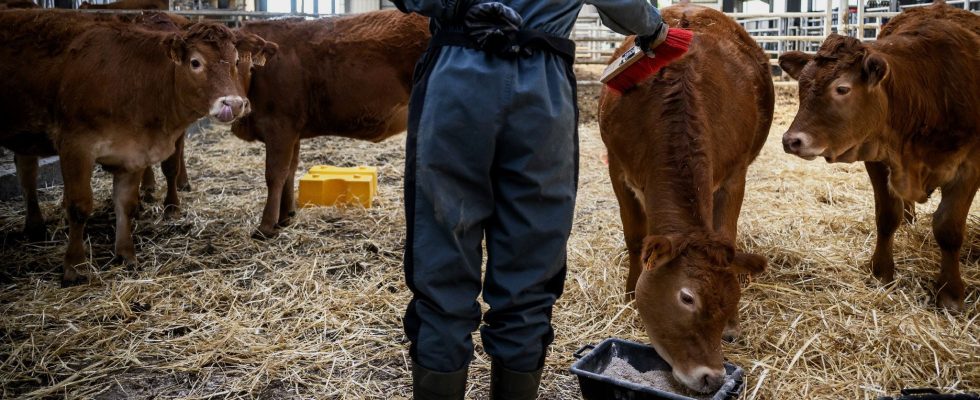This is a key aspect of reducing greenhouse gas emissions linked to food which still remains forgotten by public policies. How to reduce emissions from livestock? While the agricultural protest is in full swing in France, the report of the High Council for the Climate, unveiled this Thursday, underlines the importance of initiating a real transition in agriculture and points in particular to the consumption of meat products.
In France’s carbon footprint, agriculture represented nearly 18% of emissions in 2021. Among the sources of emissions, the spreading of nitrogen fertilizers which contribute to the production of greenhouse gases, or the use of motor vehicles and boilers. But the main source of direct emissions remains livestock farming, with more than 59% of the total balance, the vast majority of which (83%) is composed of methane release linked to cattle burps. This sector therefore represents a major lever for reducing the carbon footprint of agriculture and achieving France’s carbon neutrality objectives by 2050.
Stubborn habits
However, for several decades, meat consumption has been increasing almost continuously. Between 1970 and 2021, the French have almost doubled the place given to meat in their diet. “This increase started in the post-war period, firstly because of the increase in the standard of living, but also because the prices of meat fell under the effect of the development of mass distribution,” explains Charlie Brocard, researcher at the Institute for Sustainable Development and International Relations (IDDRI). Today, a significant part of consumption is done in restaurants or in meat-based preparations.
In fact, if livestock emissions have decreased by 15% between 1990 and 2021, it is not due to a drop in consumption, but because of the reduction in livestock linked to the socio-economic difficulties of the sector, recalls the HCC in its report. As a result, France increased its imports. “In twenty years, those of meat and poultry preparations have multiplied by more than four,” underlines the HCC. Today 20% of beef and 30 to 40% of pork or poultry consumed in France are imported.
This is why the independent organization is not calling for a reduction in livestock in France, as recommended by the Court of Auditors last May, but for a global strategy to reduce consumption. “There is no point in giving instructions to reduce the cattle herd if consumption does not decrease in parallel, because we then increase imports whose carbon weight is greater than that of European production,” explained Marion Guillou, member of the High council for the climate, during a press conference. According to the HCC’s work, a reduction in consumption of at least 30% would help halve agricultural emissions by 2050.
Include all stakeholders
But how can we get there, when the subject of food has become particularly politically divisive in recent years? Certain methods now make it possible to reduce direct emissions from cattle, such as the management of their feed, effluents, or the extension of livestock farming to pastures. Above all, the HCC calls for encouraging the development of new sectors, such as that of legumes, which would make it possible to increase the share of plant proteins on plates. “We must have an overall approach which encourages the reduction of products of animal origin and their substitution, so that the efforts made in agriculture and livestock farming in France result in reductions in emissions at the level global”, explains Corinne Le Quéré, president of the High Council for the Climate.
Encourage collective catering to offer more plant-based offerings, regulate advertising and promotional offers, etc. The organization calls for not only targeting farmers and consumers but to include all stakeholders. “Located between the upstream and downstream of the chain, manufacturers and distributors are not considered important links in this transition. This is a problem,” confirms Charlie Brocard. “Large distribution could better promote local and low-carbon products, by adding sustainability criteria to their supplies, this would make it possible to reduce emissions during intermediate stages, provided that logistics chains are optimized,” adds Corinne Le Quéré.
The benefits of these practices are numerous. A study by the Institute for Climate Economics (I4CE) published last February highlighted that the reduction in meat consumption would also contribute to improving France’s sovereignty in food matters by reducing the share of areas dedicated to animal feed. Thus, a 30 to 50% reduction in cattle herds would free up 3 to 5 million hectares of arable land, which could then be dedicated to human food. Enough to make us less dependent on imports. “This reduction in size would also make it possible to promote production that emits less carbon to the consumer, and thus better remunerate them,” adds Corinne Le Quéré. Happiness is still possible in the meadow.
.
